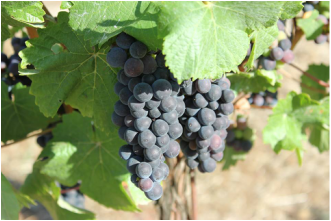Post By: Molly Bohon
Picture By: Bennett Vineyards & Wine Company
Because March is our month focusing on bud break and viticulture, also known as the science of grape growing, I thought it would be entertaining to learn a bit more about the grape growing process as a whole. Every step in the development of the grapes is vital in order to produce the grapes’ best characteristics.
With the dormant season coming to an end, and bud break about to begin in the South Willamette Valley, this time of year is an important transition period in the grape growing process. In the South Willamette Valley bud break tends to occur around April 15 but this can vary by a couple weeks each year. There are multiple elements that affect the grape growing process. Climate, temperature, soil, and water all play an important role when it comes to viticulture. For example, when it comes to harvesting the grapes, cooler sites like Brigadoon Wine Co. tend to harvest a couple weeks later than wineries like Pfeiffer Vineyards because Brigadoon’s fruit ripens slower.
Weather is always the main challenge when growing grapes because rarely are there two years that are similar. People have no control with what mother nature can do. There are some techniques to help ease certain weather situations, but still one is limited. For example, there are wind machines to help limit the amount of frost on the grapevines but the machine can only do so much. Sometimes if you have a very wet season, you have to have the grapes dry out longer and harvest them later.
A major component in the grape growing process are not just the grapevines themselves, but the rootstocks they grow on. Many grapevines are grafted onto different rootstocks to tolerate different climate conditions. Specific rootstocks are intended for different climates. There are around 3-5 different kinds of rootstocks that are suitable for most of the Willamette Valley. Some are better than others depending on the exact location. Rootstocks are depicted on soil, soil depth, site, wine style looking to make, etc.
After interviewing Chris Shown, owner of Brigadoon Wine Company, he explained in depth about his rootstock business and the importance of planting the correct rootstocks for the right geographical location. He explained that the rootstocks that he grows are intended for hotter, dryer, and more drought prevalent locations because he distributes them to commercial nurseries that sell to vineyards in California and Texas. He explained that he would never use these kinds of rootstocks on his own vineyard because here, there is deep soil with enough vigor for the vine. The different rootstocks tolerate different weather conditions and help influence how well the buds grow on the grapevines.
So many factors influence how the grapes will grow and progress and it is important to gain a better understanding of all the work it takes to grow grapes. Every year is different and everyday there are new challenges. How grapes are grown depending on the weather, soil, temperature, and rootstocks have a deep impact on the final product. It is fascinating to see all that goes into the grape growing process and see how important it is to take care of your grapes!
